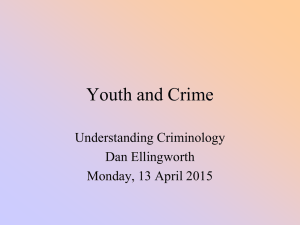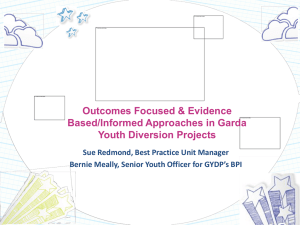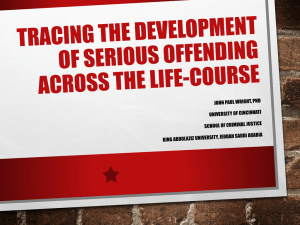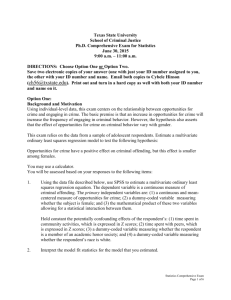Lec 6 - Age and Criminal Activity 0809
advertisement
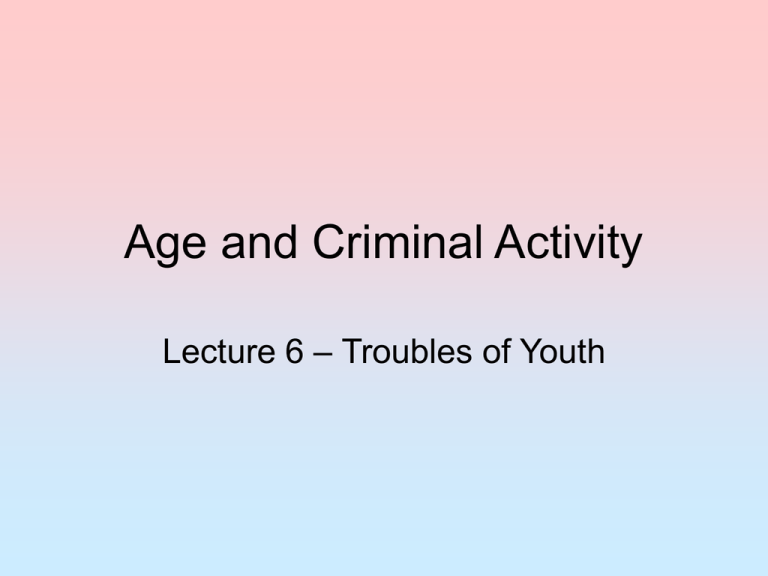
Age and Criminal Activity Lecture 6 – Troubles of Youth Lecture Outline • Importance of Childhood – Perceptions and Realities • Age-Crime Curve – Underlying Distributions • Perspectives on the Process of Aging – Trajectories or Pathways? • Persistent Heterogeneity • State Dependency • The Study of Criminal Careers – Onset, Duration and Desistance Importance of Childhood • Upbringing, early childhood and even pre-natal factors seen by many as either – A key factor in determining personality – A signal of underlying deviant personality (see Farrington, Moffitt) • Others (see Furedi) argue that “parental determinism” is overstated, and used to justify a interventionist and judgmental attitude to the family -> “Paranoid Parenting” Proportion of 10- to 25-year-olds offending in the last 12 months (2005 OCJS) 45 40 35 Percentage 30 25 20 Male 15 Female 10 5 0 11 13 15 17 19 21 23 25 Age • Young men offend at higher rates than young women • Evidence, though, that gender differential narrowing • “Peak age of offending” lower for women Hirschi and Gottfredson • Central thesis – “invariant” age distribution of crime • across types of crime • across social settings – Current criminological theory cannot explain onset and desistance – Age needs to be recognised, but other criminological causal theories do not need to be ‘thrown out’ Problems with existing theories • Physical maturation? - the peak age of offending precedes full physical maturation • Social Bonding: the age at which deviant groupings are at the strongest, coincides with the decline in offending • How is it that social bonding becomes strengthened? • Why is the ‘desistance curve’ smooth, and the effects the same between 19-24 as, say 29-34? Investigating the Age- Crime Curve: Two (or more?) distinct groups? Adolescent Limited Offenders Lifetime Persistent Offenders Trajectories v. Pathways • Trajectories – the level of criminal propensity is determined early in life: persistent heterogeneity – Research Aim: identify risk factors that predict criminal propensity – Policy aim: inhibiting the development of criminal potential in early stages of individuals’ lives • Pathways – criminal behaviour is the result of decisions and turning points throughout life: state dependency – Research Aim: identify how ‘events’ in people’s lives can change chances of offending – Policy Aim: crime reduction effort targeted throughout life course Key Considerations • A need to address how offending ‘careers’ progress • Onset of offending • Duration of offending • Desistance of offending Considerations • Teenage offending: increased numbers of offenders, or increased rates of offending? • Changing characteristics of offending across age groups? Types and range of crime committed? • Correlation between offending at different ages? Why? • How do these considerations affect policy and practice?


